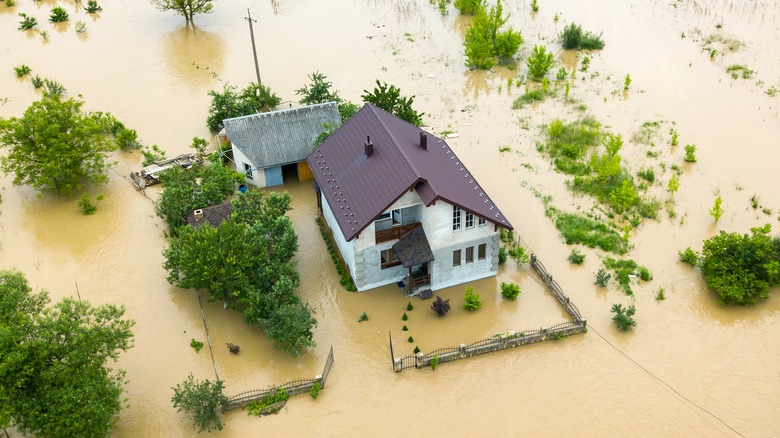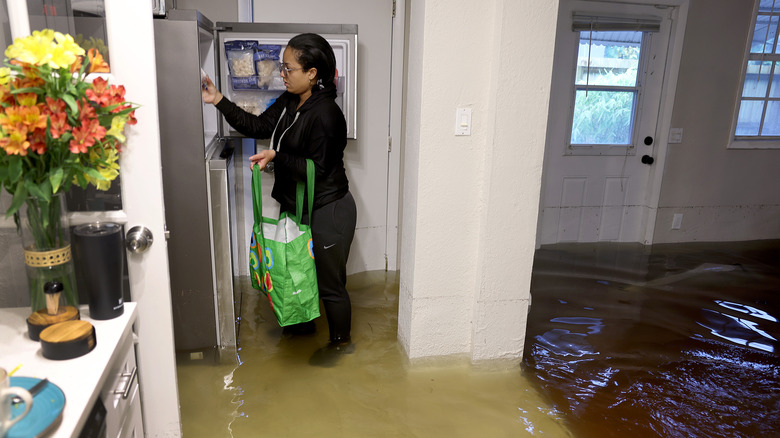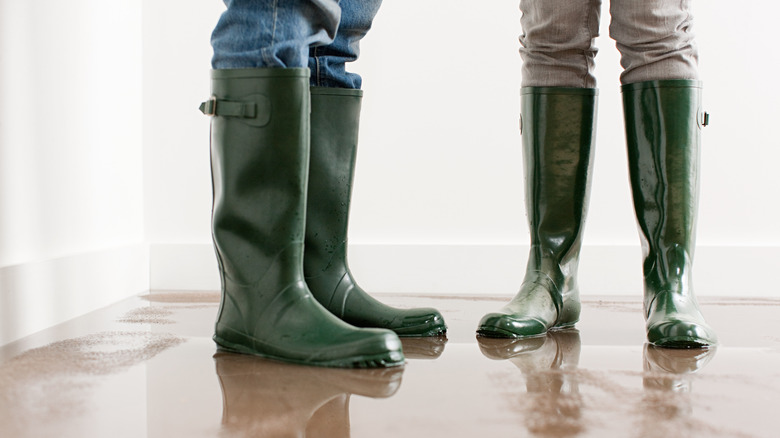How To Determine If You Need Flood Insurance For Your Home
Flood insurance is expensive, but it could save you from paying for flood-related repairs out of pocket. While flood insurance tends to be required for homeowners in areas with greater risks of flooding, it can be a good idea to purchase insurance even if you live outside of high-risk zones. According to the Federal Emergency Management Agency (FEMA), floods occur more often and require more costly repairs than any other natural disaster, and repairs from just 1 inch of water can be over $10,000.
If you're considering buying flood insurance, checking if the property is in a flood zone is a good first step. FEMA offers a free online flood zone map, but their data may not be the most recent. Another flood map tool, Risk Factor, uses data on floods from the last 30 years and also calculates a property's risk for wildfire, heat, and wind. Properties that are in zones with more risk should highly consider flood insurance, but it can still be beneficial for those with moderate or low-risk levels.
What to think about when considering flood insurance
Homes that are in a moderate or low-risk area for flooding still experience floods, though it's less common than in higher-risk areas. If your house is near a body of water or adjacent to a high-risk zone, investing in flood insurance is a smart precaution, especially since typical homeowners insurance doesn't cover floods. While FEMA offers assistance for people who experience natural disasters, it's either a loan that includes interest or a grant amounting to some $5,000, but the highest flood insurance offered by the National Flood Insurance Program (NFIP) for family homes covers $250,000 of building damage.
Another factor in deciding if flood insurance is right for you is the cost. For those with a tight budget, flood insurance might not seem worth the price. The yearly premiums for NFIP flood insurance vary from around $600 to almost $1,700, depending on the state and flood risk level. It typically takes 30 days for a flood insurance policy to go into effect after it's purchased, so make sure to get your policy before you'll need it.
What does flood insurance cover
Most NFIP insurance policies have coverage for the items in a home as well as the structure itself. Personal belongings (aka contents), such as clothes, furniture, and electronics are typically covered (up to $100,000, depending on the policy), as well as most appliances, artwork, and carpets. The coverage for the house itself usually includes electrical and plumbing work, water heaters, foundational walls, cabinets, staircases, and garages. Every policy is different, so it's important to look around and find the right one for your family.
If you don't like the NFIP policy options, there are also private companies that offer flood insurance, but it's sometimes only supplemental. The age and value of your home will influence how much coverage you'll need, and if you estimate that a flood could cause more than $250,000, adding private insurance can help cover everything. Whether you live in an area prone to floods or not, having flood insurance can save your home in the event of a disaster.


